PREVIOUS
Economic Survey 2023-2024 Part - 01
July 31 , 2024
2 hrs 0 min
91
0
(இதன் தமிழ் வடிவத்திற்கு இங்கே சொடுக்கவும்)
Introduction
- The Economic Survey 2023-24, presented by Union Finance Minister Nirmala Sitharaman on 22nd July 2024, provides a detailed analysis of the Indian economy's performance over the past year and offers insights into future prospects and policy directions.
- Despite the challenges posed by the COVID-19 pandemic and the inherited economic imbalances, India has made remarkable strides in its economic journey.
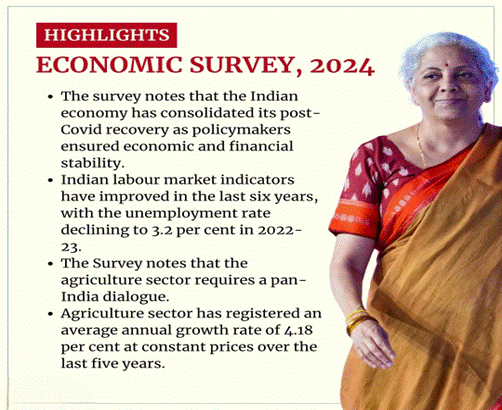
Current Economic Landscape
- Today, India stands as the 5th largest economy globally, with an estimated GDP of USD 3.7 trillion for FY24.
- This achievement comes despite the pandemic's severe disruptions and the initial macroeconomic imbalances and a fragile financial sector.
- Real GDP growth for FY25 is projected to be closer to 7%, with potential for growth rates to exceed 7% by 2030.
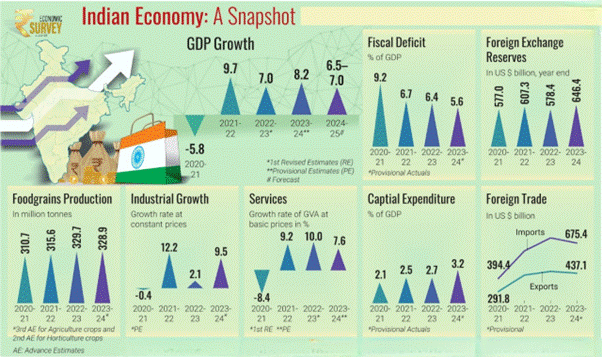
Future Growth Prospects
- Looking ahead, India is poised to become the 3rd largest economy in the world within the next three years, with an expected GDP of USD 5 trillion.

- Under a set of reasonable assumptions, India can aspire to reach a USD 7 trillion economy by 2030.
- The government has set an ambitious goal of becoming a ‘developed country’ by 2047.
Economic Achievements and Stability
- Decisive policy actions over the past decade have significantly strengthened India’s infrastructure and financial sector, promoting inclusive development and job creation.
- The country has seen notable improvements in fiscal stability and inflation control, marking a transition from economic fragility to strength.
- Strategic administrative and monetary policies have effectively managed inflationary pressures, with retail inflation averaging 5.4% in FY24, the lowest level since the pandemic.

Priority Areas for Future Reforms
- To sustain and enhance this growth trajectory, the Survey highlights several priority areas for future reforms:
- Skilling: Enhancing the skills of the workforce to meet the demands of a growing economy.
- Learning Outcomes: Improving educational outcomes to foster a knowledgeable and capable workforce.
- Health: Strengthening the healthcare sector to ensure the well-being of the population.
- Energy Security: Ensuring a stable and sustainable energy supply.
- Reduction in Compliance Burden for MSMEs: Easing regulatory burdens to promote the growth of Micro, Small, and Medium Enterprises.
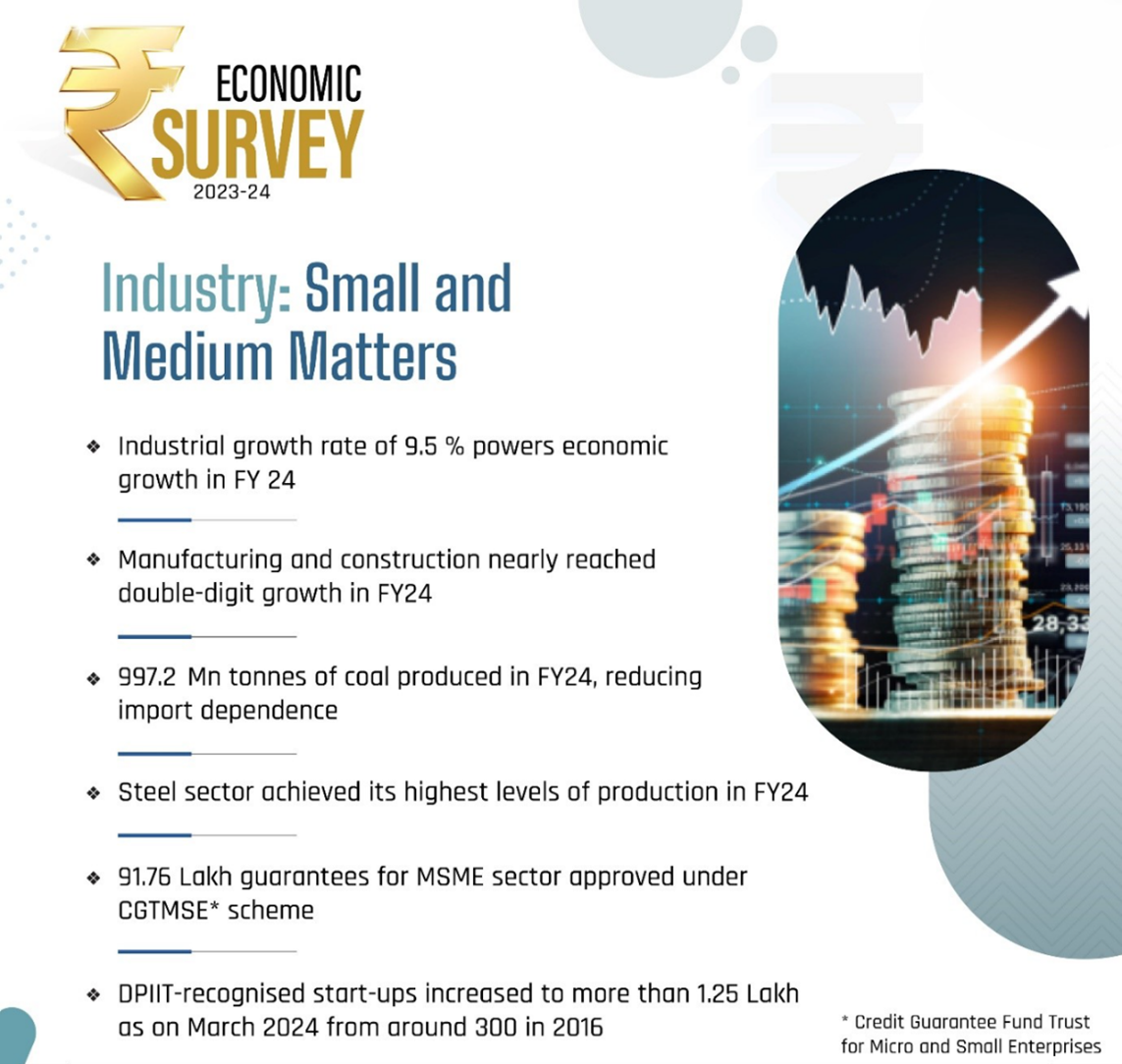
- Gender Balancing in the Labour Force: Promoting gender equality in employment opportunities.
Challenges and Concerns
- While the economic outlook is optimistic, the elevated risk of geopolitical conflicts remains an area of concern.
- Continuous efforts to mitigate these risks will be crucial for maintaining stability and growth.
GDP Growth and Economic Stability
- Real GDP Growth:
- India's real GDP grew by 8.2% in FY 2023-24, surpassing the 8% mark in three out of four quarters.
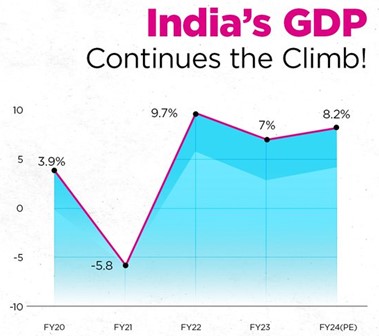
- The growth forecast for FY 2024-25 is set between 6.5% and 7%, with balanced risks.
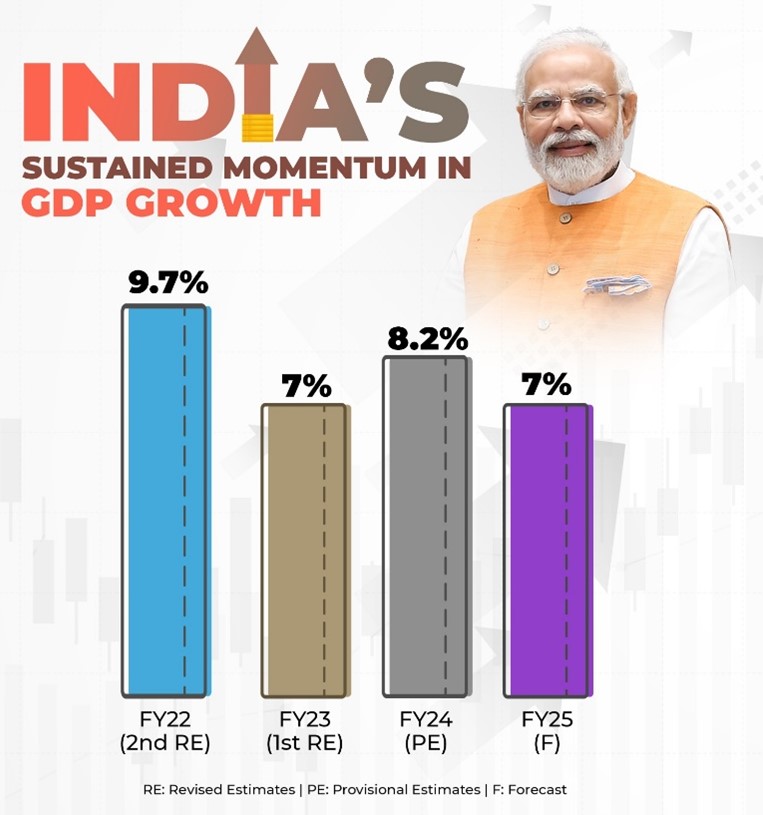
- This growth is driven by strong domestic demand and a resurgence in investments.
- Gross Fixed Capital Formation: Increased by 9% in real terms, bolstered by government capital expenditure and steady private investment.
- Retail Inflation: Declined to 5.4%, thanks to effective administrative and monetary policy measures addressing global disruptions and domestic challenges.
Employment and Income
- Youth Employability: 51.25% of the youth are not considered employable, highlighting the need for skill development.
- Per Capita Income: India's per capita income has grown more than sevenfold since 1990 and is projected to reach ₹14.9 lakh by 2047.
- Employment Creation: The economy needs to generate nearly 78.5 lakh jobs annually in the non-farm sector until 2030.
- The production linked incentive (PLI) schemes have created 8.5 lakh employment opportunities, with an investment of ₹1.28 Lakh crore.
- Unemployment rate declined to 3.2% in FY2022-23.
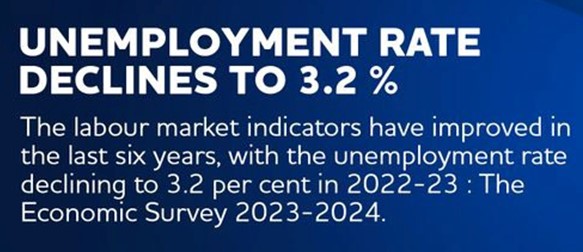
Monetary Management and Credit Growth
- Bank Credit Growth: Sustained momentum with credit disbursal at ₹164.3 lakh crore, growing by 20.2% at the end of March 2024.
- Non-Performing Assets: The GNPA ratio fell to a 12-year low of 2.8% at the end of March 2024.
Price and Inflation Management
- Retail Inflation: Managed to remain at 5.4% despite challenges like extreme weather events and supply chain disruptions.
- Food Inflation: Based on the Consumer Food Price Index, it increased from 3.8% in FY 2021-22 to 7.5% in FY 2023-24.
Reduction in Multidimensional Poverty
- 13.5 crore Indians escaped multidimensional poverty between 2015-16 and 2019-21, driven by rural India and the most backward areas, demonstrating the ideal of “Antyodaya” (NITI Aayog report).
Access to Basic Amenities
- Electricity, Water, and Sanitation: There has been a consistent rise in access to electricity, drinking water, sanitation, and clean fuel, according to NFHS (2019-21).
- Out-of-pocket Health Expenditure: Declined from 62.6% of total health expenditure in FY15 to 47.1% in FY20.
- Maternal Mortality Ratio (MMR): Declined to 97 per lakh live births in 2018-20 from 130 in 2014-16.
- Female Gross Enrolment Ratio (GER) in higher education overtook the male GER in FY18.
Health Initiatives
- Ayushman Bharat: 30.3 crore Ayushman Bharat cards created and 6.2 crore hospital admissions since its launch.
- Over 1.6 lakh primary healthcare facilities upgraded to Ayushman Arogya Mandir.
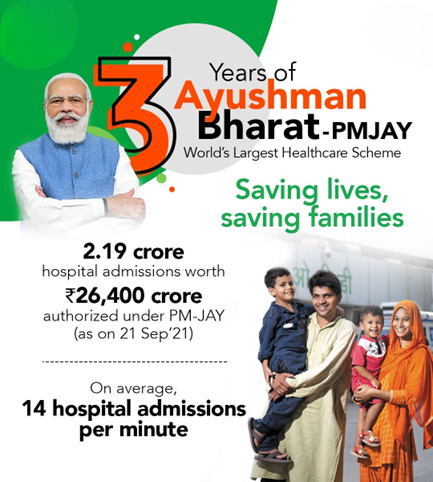
- Janaushadhi Kendras: 10,000 centers across the country (as of Nov 2023).
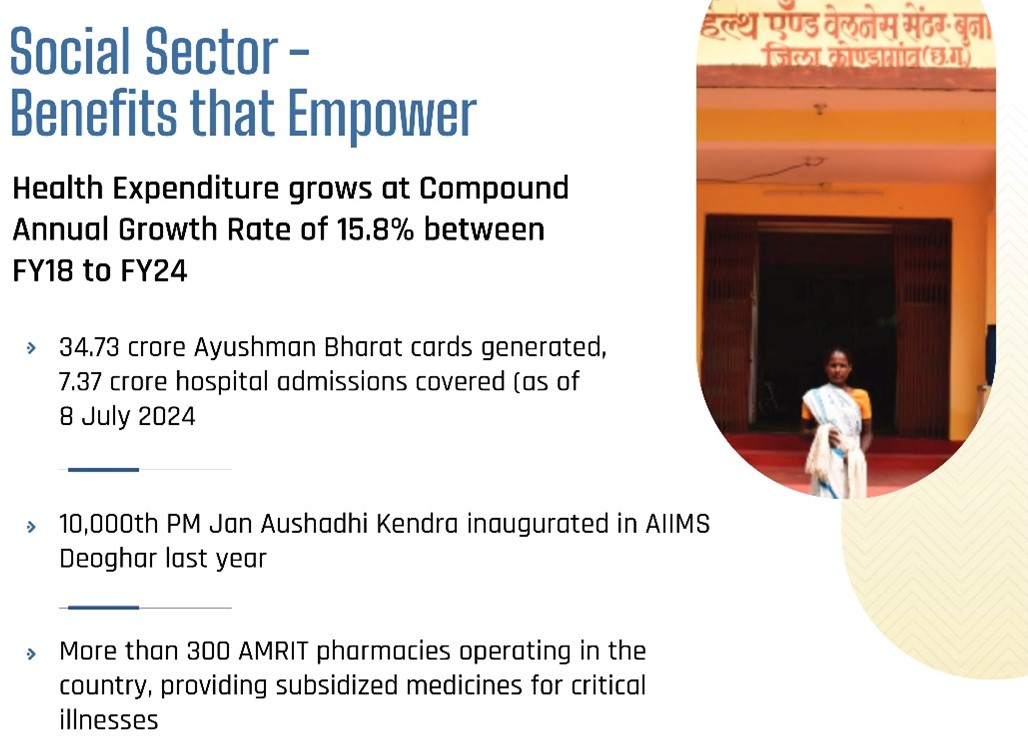
- Tuberculosis (TB): 16% decline in TB incidence between 2015 and 2022, with an 18% reduction in mortality.
- Janani Suraksha Yojana:
- Janani Suraksha Yojana (JSY) is being implemented with the objective of reducing maternal and neonatal mortality by promoting delivery among poor pregnant women.
- 1 crore beneficiaries in FY22.
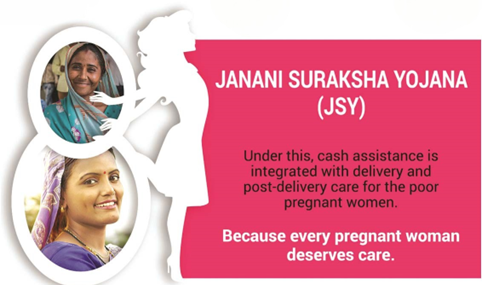
- PM Jan Aushadhi Kendras: 10,000 centers providing affordable medicines under this scheme.
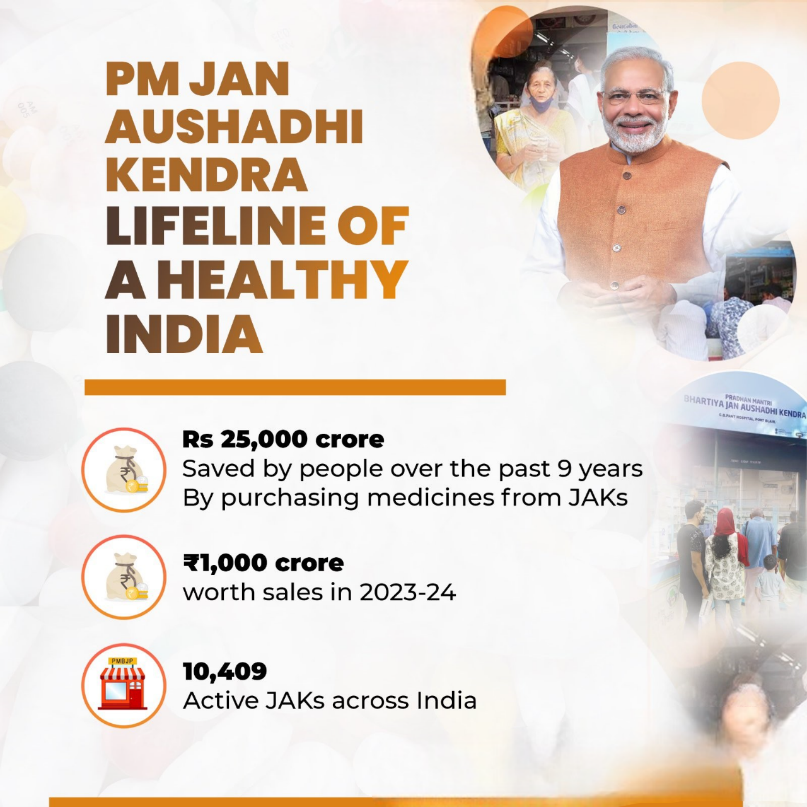
- AMRIT: Over 300 pharmacies providing subsidized critical medicines under this scheme.
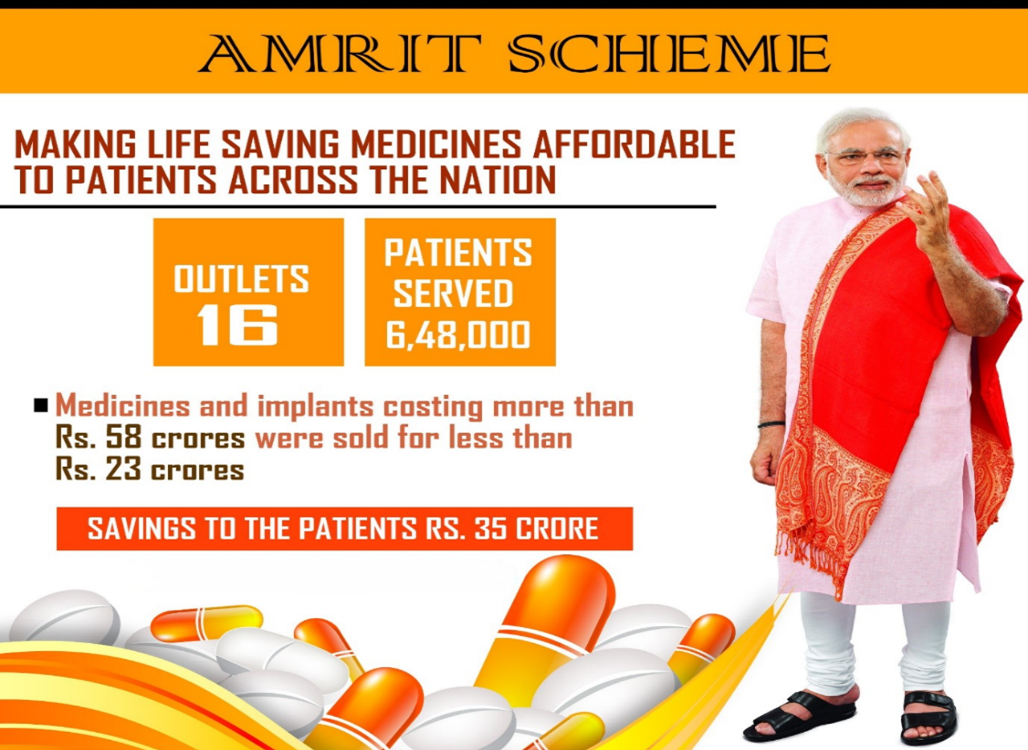
- Ayushman Bhav Campaign: Various healthcare services provided to millions.
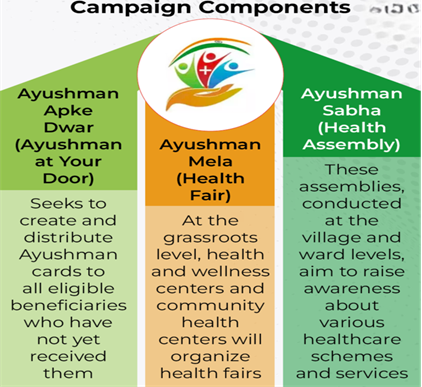
- Ayushman Bharat Digital Mission: Created 64.86 crore health accounts and registered numerous healthcare facilities.
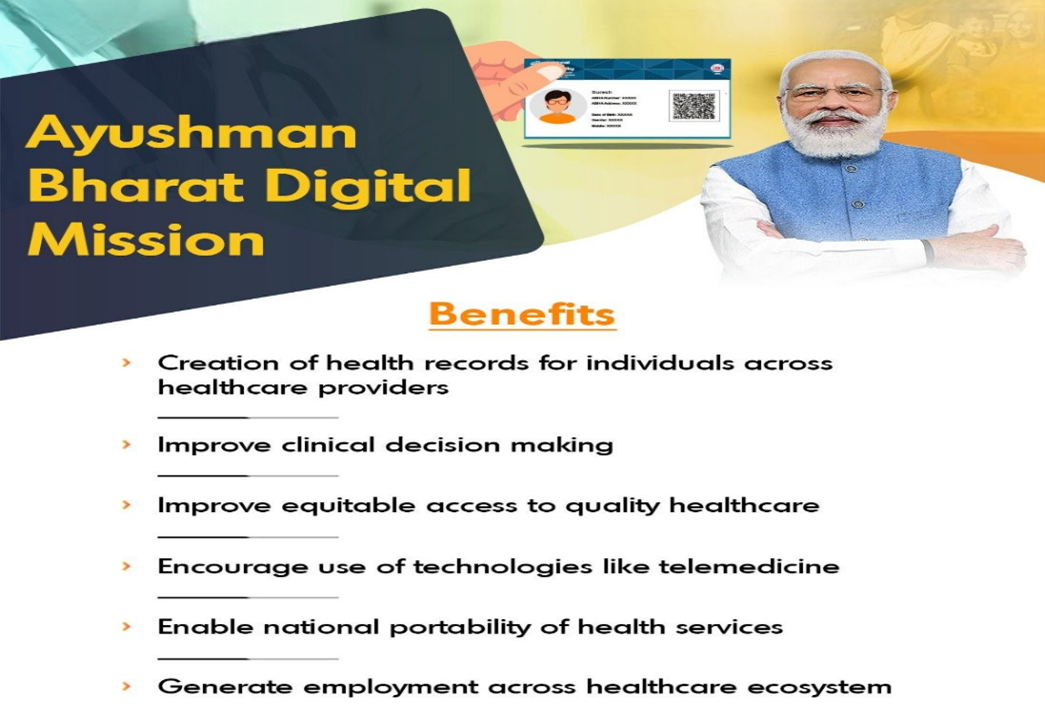
- eSanjeevani: Telemedicine service serving over 26.62 crore patients.
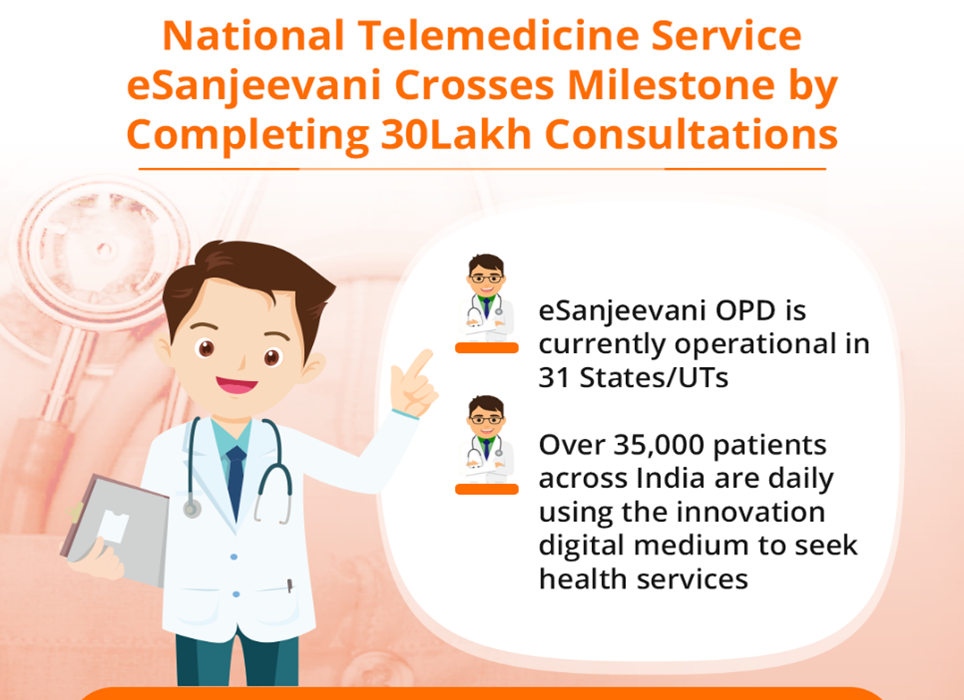
Children's Mental Health Programmes
- Rashtriya Kishor Swasthya Karyakram: Adolescent health clinics and peer education.
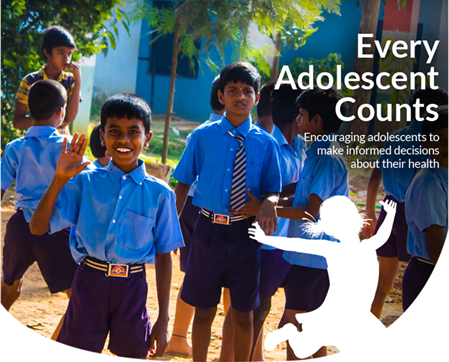
- Manodarpan: Counselling support during COVID-19.
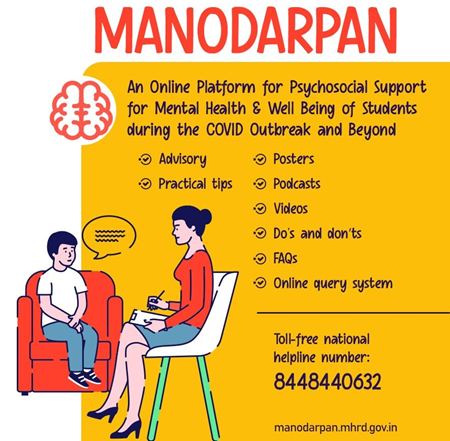
- Ayushman Bharat School Health Programme: Training Health and Wellness Ambassadors.
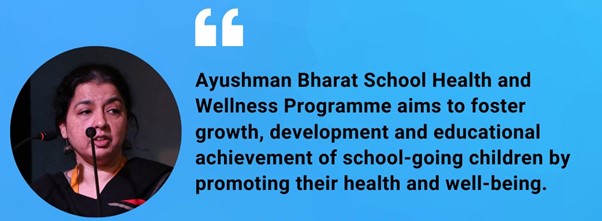
- ‘Poshan Bhi Padhai Bhi’
- Launch: May 2023.
- Purpose:
- Develop a high-quality preschool network at Anganwadi Centres.
- Play-based learning for 0-3 and 3-6-year-olds, using mother tongue as the primary instruction medium.
- 13.9 lakh operational Anganwadi centers serving around 8 crore children.
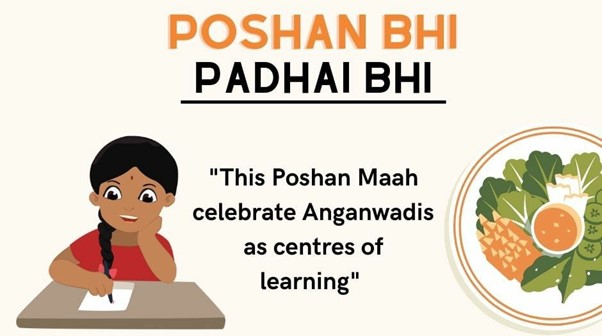
Education Reforms
- National Education Policy (NEP) 2020: Introduced to revamp the educational framework.
- Jadui Pitara: Learning Teaching Material launched in 2023.
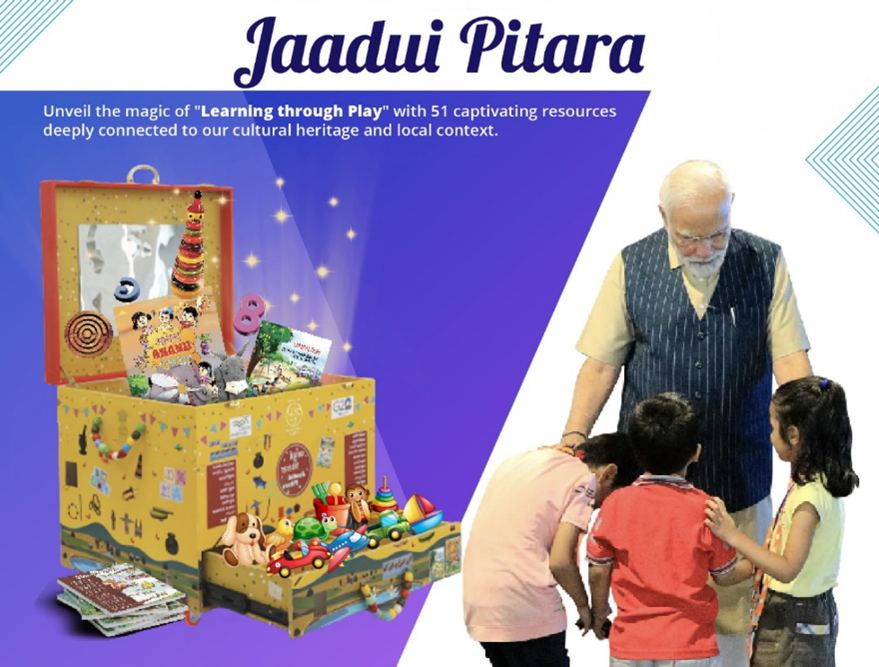
- PARAKH: PARAKH developed to improve the monitoring, measuring & assessing activities in the Indian school education system.
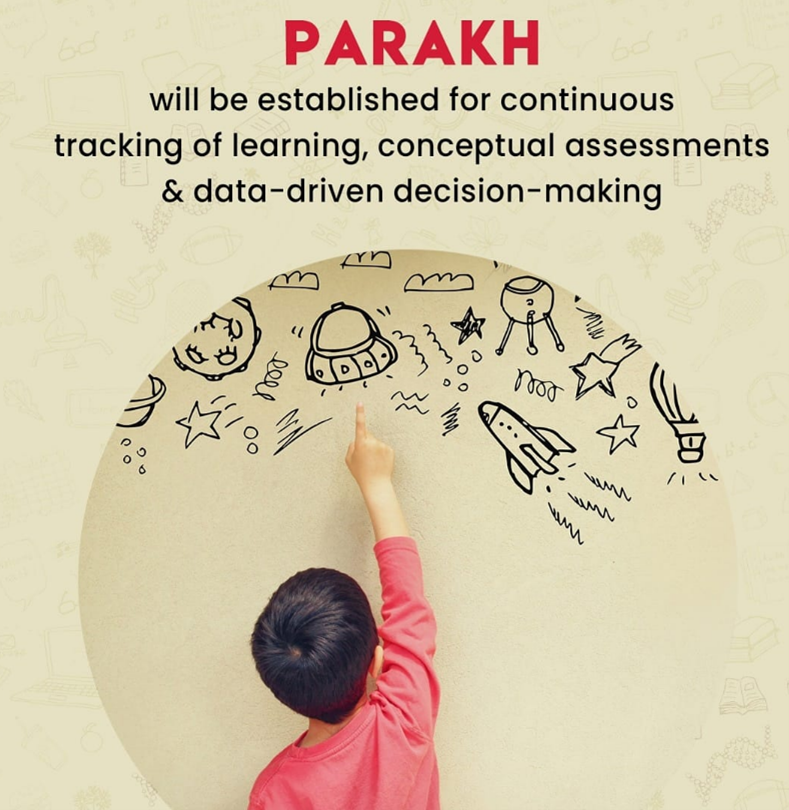
- NIPUN Bharat Mission: Launched for foundational literacy and numeracy by 2026-27.
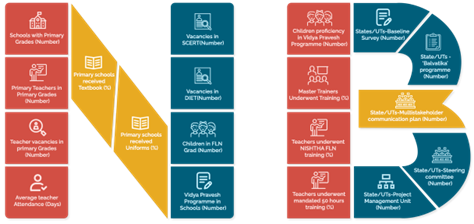
- Samagra Shiksha Achievements (2018-19 to 2023-24):
- Over 3,000 schools upgraded at various levels.
- 235 new residential schools and hostels opened.
- More than 28,000 separate girls’ toilets constructed.
- 1.2 lakh schools covered under ICT and digital initiatives.
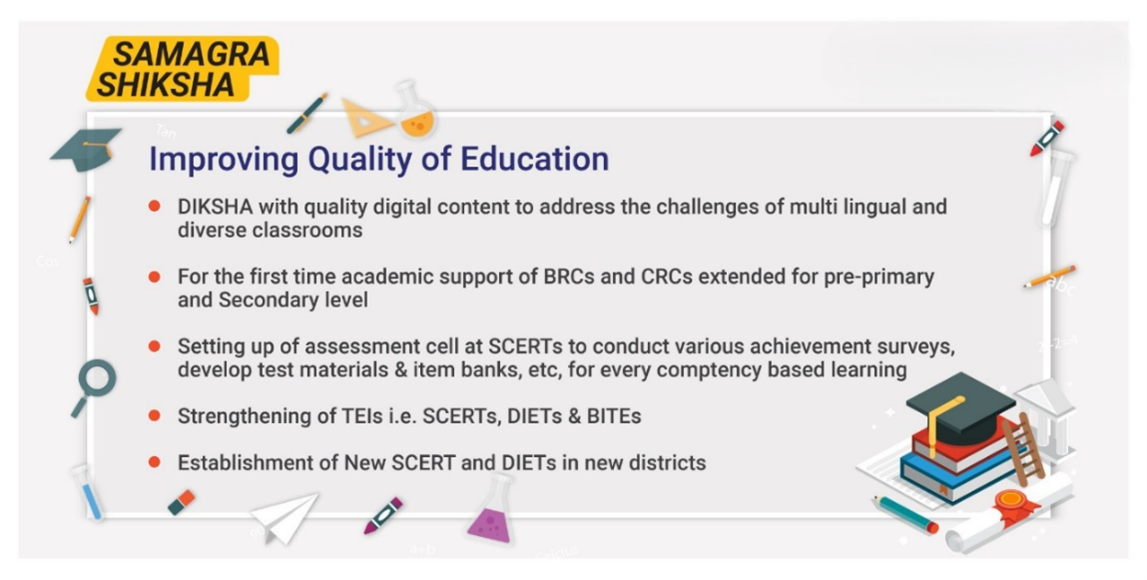
- NISHTHA Integrated Teacher Training Programme: Extended to cover teachers at all levels.
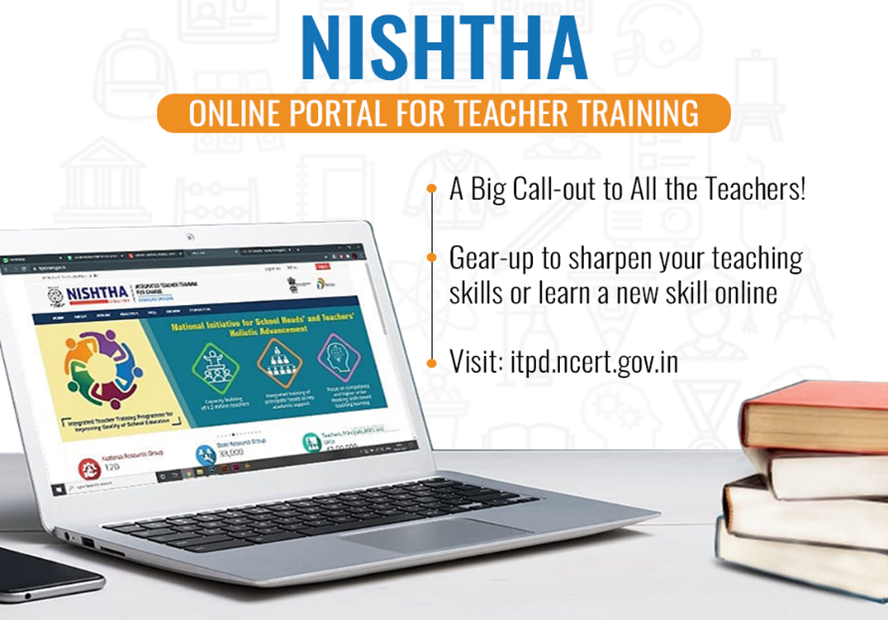
- District Institutes of Education and Training (DIETs):
- Upgrading 613 functional DIETs to DIETs of Excellence.
- ₹92,320.18 lakh approved for 125 DIETs in FY24; ₹27,923.53 lakh released for 23 States/UTs as first instalment.
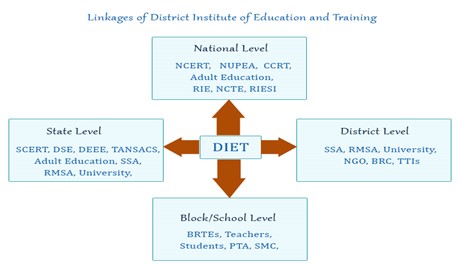
- Vidya Pravesh:
- 3-month play-based school preparation module for all Grade-I students.
- Implemented by 36 States/UTs, covering 1.13 crore students from 8.46 lakh schools in 2023-24.
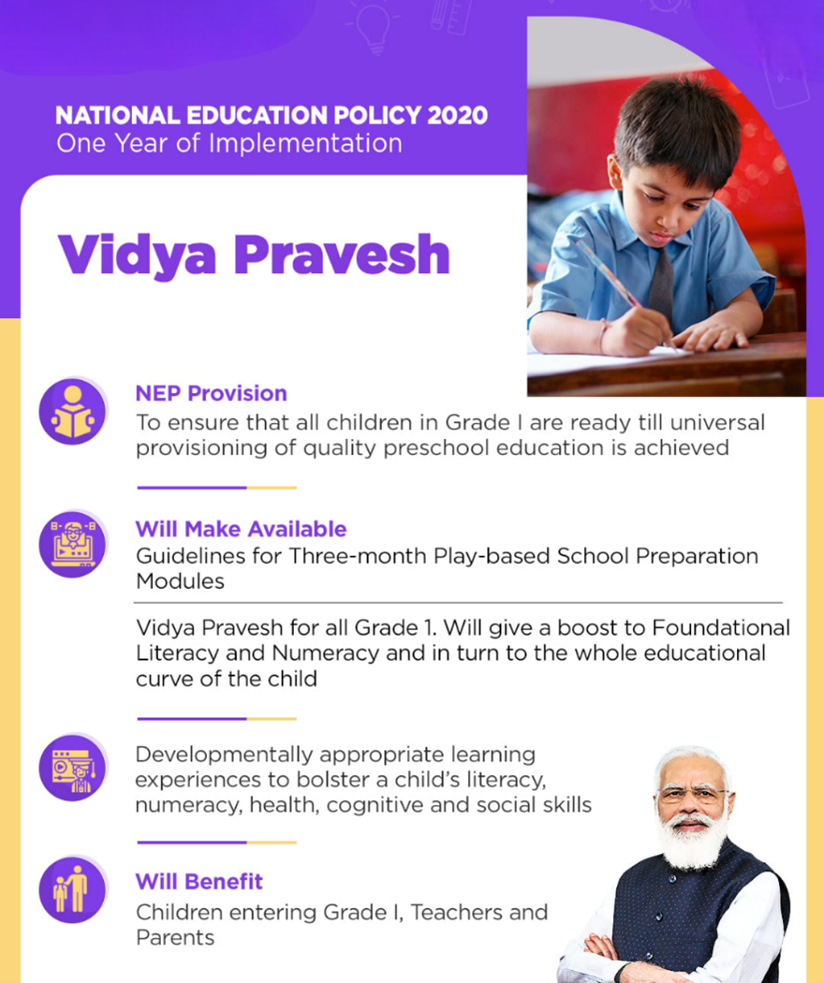
- Kasturba Gandhi Balika Vidyalaya (KGBV):
- Residential schools for girls from disadvantaged groups (SC, ST, OBC, Minority, BPL).
- Progress: 7.07 lakh girls enrolled in 5,116 KGBVs nationwide.
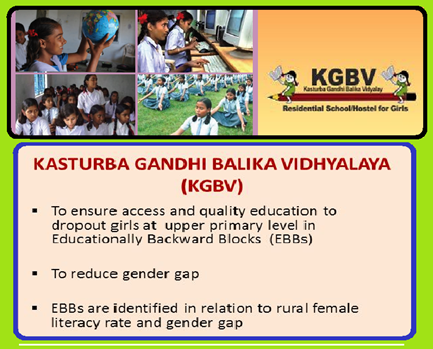
- Inclusive Education for Children with Special Needs (CwSN):
- Aim: Accessibility of education.
- Progress: 18.50 lakh CwSN covered; stipends, aids, home-based education, special educators, and learning resources provided.
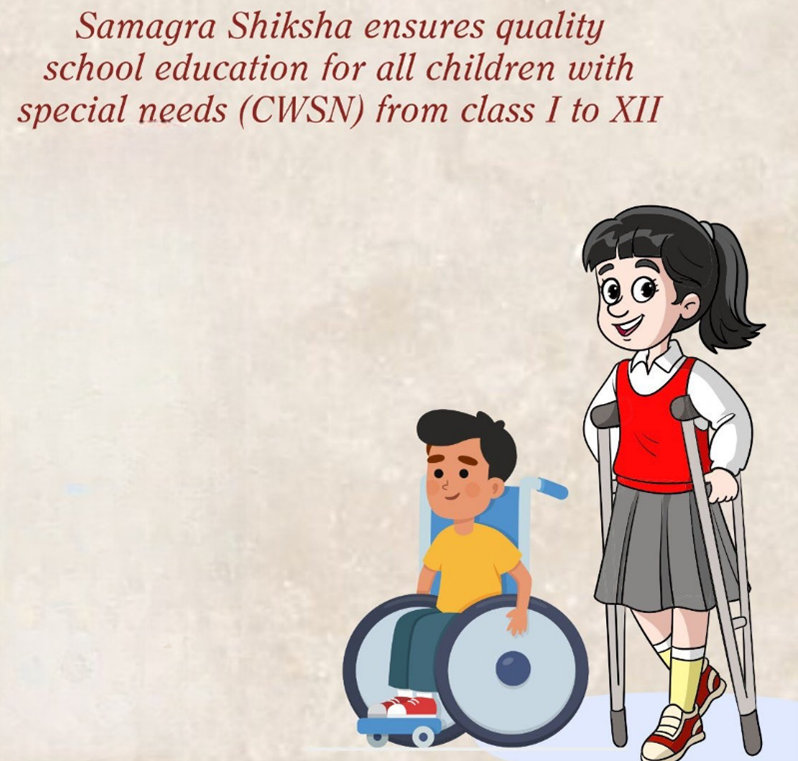
- Digital Infrastructure for Knowledge Sharing (DIKSHA): To build National digital platform for school education.
- Progress: 3,53,063 e-contents available; 1.71 crore registered users, 2.5 lakh daily active users.
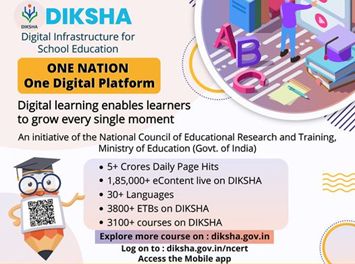
- Strengthening of Teaching-Learning and Results for States (STARS): Improve quality and governance of school education in six states.
- Progress: 6/6 targets achieved in the first two years.
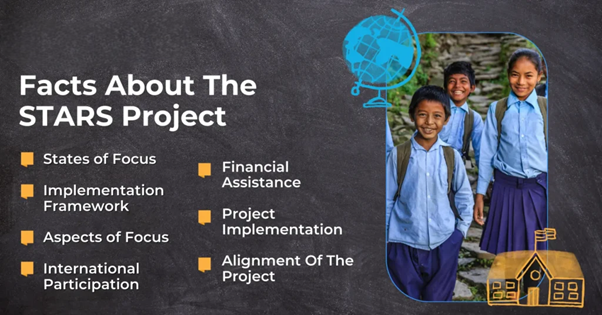
- Pradhan Mantri Schools for Rising India (PM-SHRI):
- Aim: Setting up 14,500 exemplar schools.
- Progress: 10,858 schools selected; ₹5,942.21 crore approved for 10,080 PM-SHRI Schools in FY25.
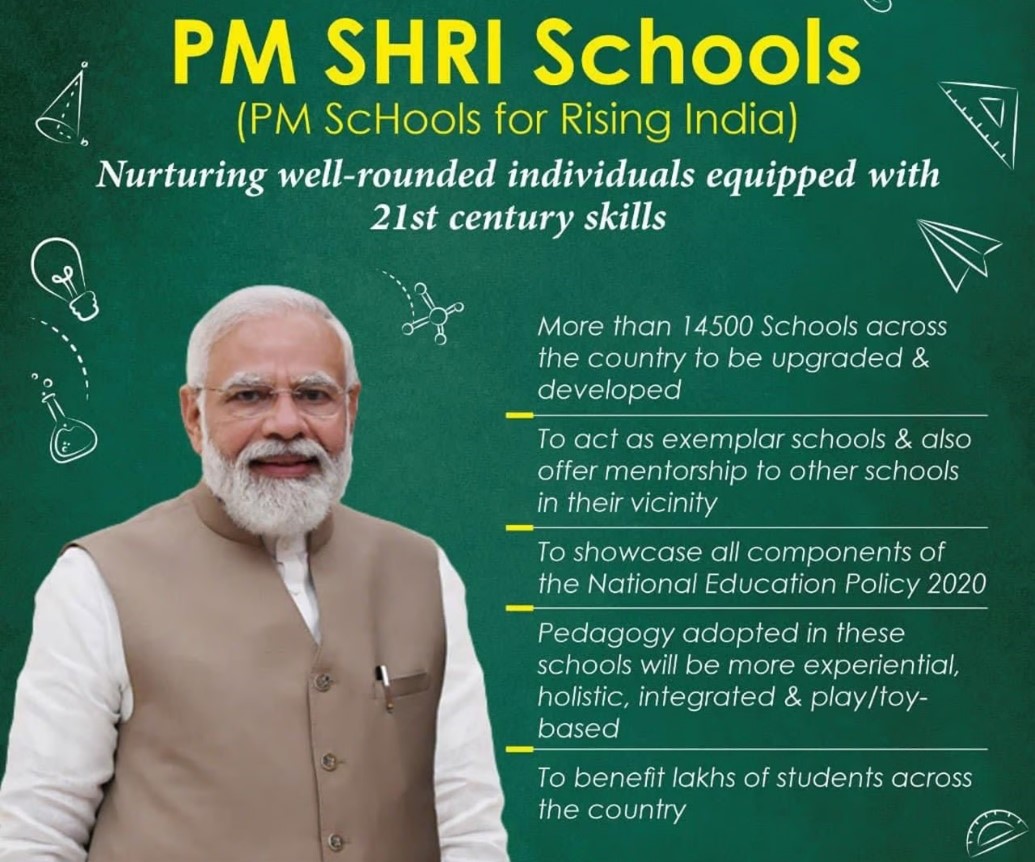
- ULLAS-Nav Bharat Saaksharta Karyakram: Foundational literacy and numeracy for non-literates above 15 years of age.
- Progress: 1.33 crore learners and 35 volunteer teachers registered; 65 lakh neo-literate by passing the literacy test.
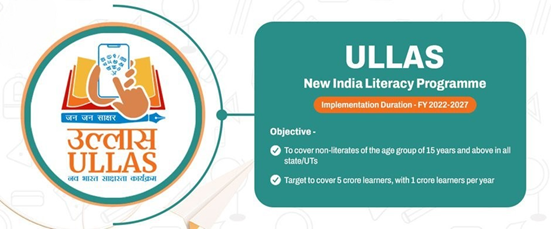
- PM POSHAN (POshan SHAkti Nirman) Scheme: One hot cooked meal for students of class I-VIII in government and government-aided schools.
- Progress: Benefits 11.63 crore children; 24.85 lakh cook-cum-helpers engaged, and 9.1 lakh kitchen-cum-stores constructed.
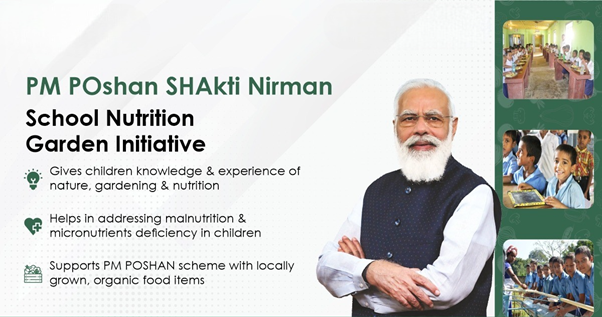
- National Means-cum-Merit Scholarship Scheme:
- Aim: Scholarships to meritorious students from economically weaker sections.
- Progress: 1 lakh fresh scholarships awarded annually; ₹300.10 crore sanctioned to 250,089 students in 2023-24.
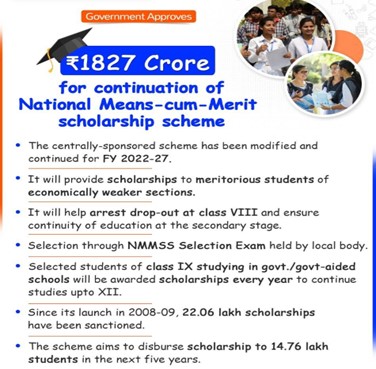
- Vidyanjali Programme
- Launched: 7 September 2021
- Improve school infrastructure and education quality through community and private sector support, as per NEP 2020.
- Key Features:
- Community Involvement: Encourages individuals and groups to help enhance schools.
- CSR Participation: Allows companies to support schools through CSR projects.
- Dedicated Portal: Provides a platform for organizations to select and support school projects.
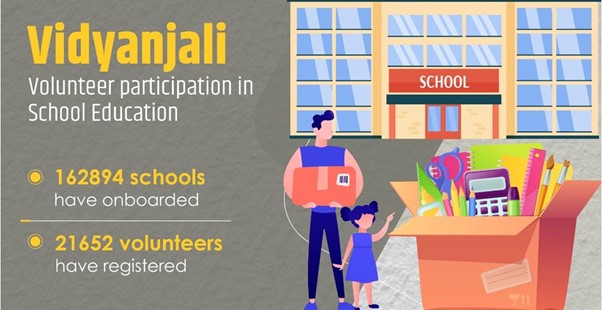
India's Online Learning Architecture
- SWAYAM: Offers 13,140+ courses across various disciplines with 4.3 crore enrolled students.
- SWAYAM PRABHA: Provides UG/PG educational content via 48 DTH channels, reaching over 1.2 million students.

- SWAYAM Plus: Offers high-quality courses for credit recognition and employability, focusing on various industries.
- SAMARTH: An e-governance solution for HEIs, adopted by over 3500 institutions to digitize administrative processes.
- PM e-VIDYA: Unifies digital education efforts, including DIKSHA with over 3.5 lakh e-contents and Sathee for competitive exam resources.
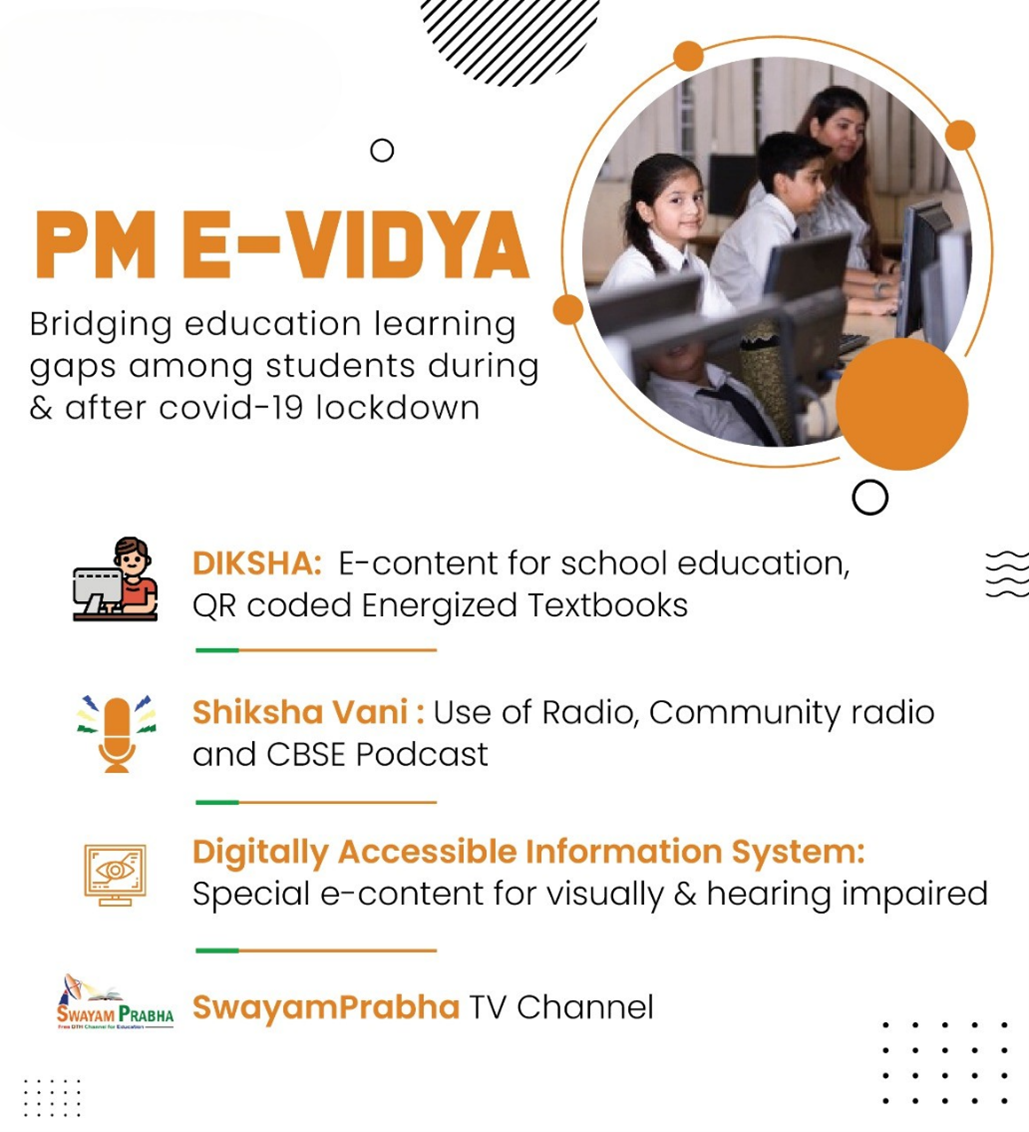
Leave a Reply
Your Comment is awaiting moderation.


